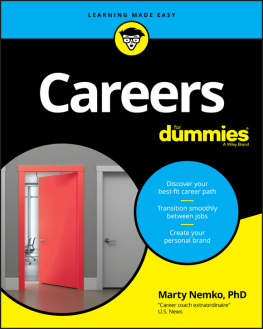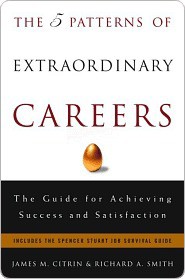James M. Citrin - The 5 Patterns of Extraordinary Careers: The Guide for Achieving Success and Satisfaction
Here you can read online James M. Citrin - The 5 Patterns of Extraordinary Careers: The Guide for Achieving Success and Satisfaction full text of the book (entire story) in english for free. Download pdf and epub, get meaning, cover and reviews about this ebook. year: 2003, publisher: Crown Business, genre: Science / Home and family. Description of the work, (preface) as well as reviews are available. Best literature library LitArk.com created for fans of good reading and offers a wide selection of genres:
Romance novel
Science fiction
Adventure
Detective
Science
History
Home and family
Prose
Art
Politics
Computer
Non-fiction
Religion
Business
Children
Humor
Choose a favorite category and find really read worthwhile books. Enjoy immersion in the world of imagination, feel the emotions of the characters or learn something new for yourself, make an fascinating discovery.

- Book:The 5 Patterns of Extraordinary Careers: The Guide for Achieving Success and Satisfaction
- Author:
- Publisher:Crown Business
- Genre:
- Year:2003
- Rating:4 / 5
- Favourites:Add to favourites
- Your mark:
The 5 Patterns of Extraordinary Careers: The Guide for Achieving Success and Satisfaction: summary, description and annotation
We offer to read an annotation, description, summary or preface (depends on what the author of the book "The 5 Patterns of Extraordinary Careers: The Guide for Achieving Success and Satisfaction" wrote himself). If you haven't found the necessary information about the book — write in the comments, we will try to find it.
Why did they ascend to the top and prosperwhy did they have extraordinary careerswhile others equally talented never reached their potential or aspirations?
Jim Citrin and Rick Smith of Spencer Stuart, the worlds most influential executive search firm, set out to explore this question. The resultbased on in-depth, original researchis sure to be the most important and useful book for anyone seeking to crack the code of how to build a rewarding, personally satisfying career.
Like weather systems and financial markets, careers contain patterns. What Citrin and Smith found from their research and extensive experience is that people with extraordinary careers are guided by five straightforward patterns that can be harnessed and used by everyone. These individuals:
Understand the value of you by translating their knowledge and experience into action, building their personal value over each phase of their career
Practice benevolent leadership by not clawing their way to the top but by being carried there
Solve the permission paradox, the dilemma of not being able to get a job without experience and not getting the experience without the job
Differentiate using the 20/80 principle of performance by storming past their defined jobs to create breakthrough ideas and deliver unexpected impact
Do not micromanage their careers, but macromanage them by gravitating toward the things they are best at and have a passion for, and working with people they like and respect
No one manages your career for you. But with Citrin and Smith as your guide, youll be able to understandand act onthe root causes of success. And what better source for strategic career advice than Spencer Stuart, the firm that over the past ten years has conducted more than 60 percent of the searches for Fortune 1000 CEOs?
James M. Citrin: author's other books
Who wrote The 5 Patterns of Extraordinary Careers: The Guide for Achieving Success and Satisfaction? Find out the surname, the name of the author of the book and a list of all author's works by series.




